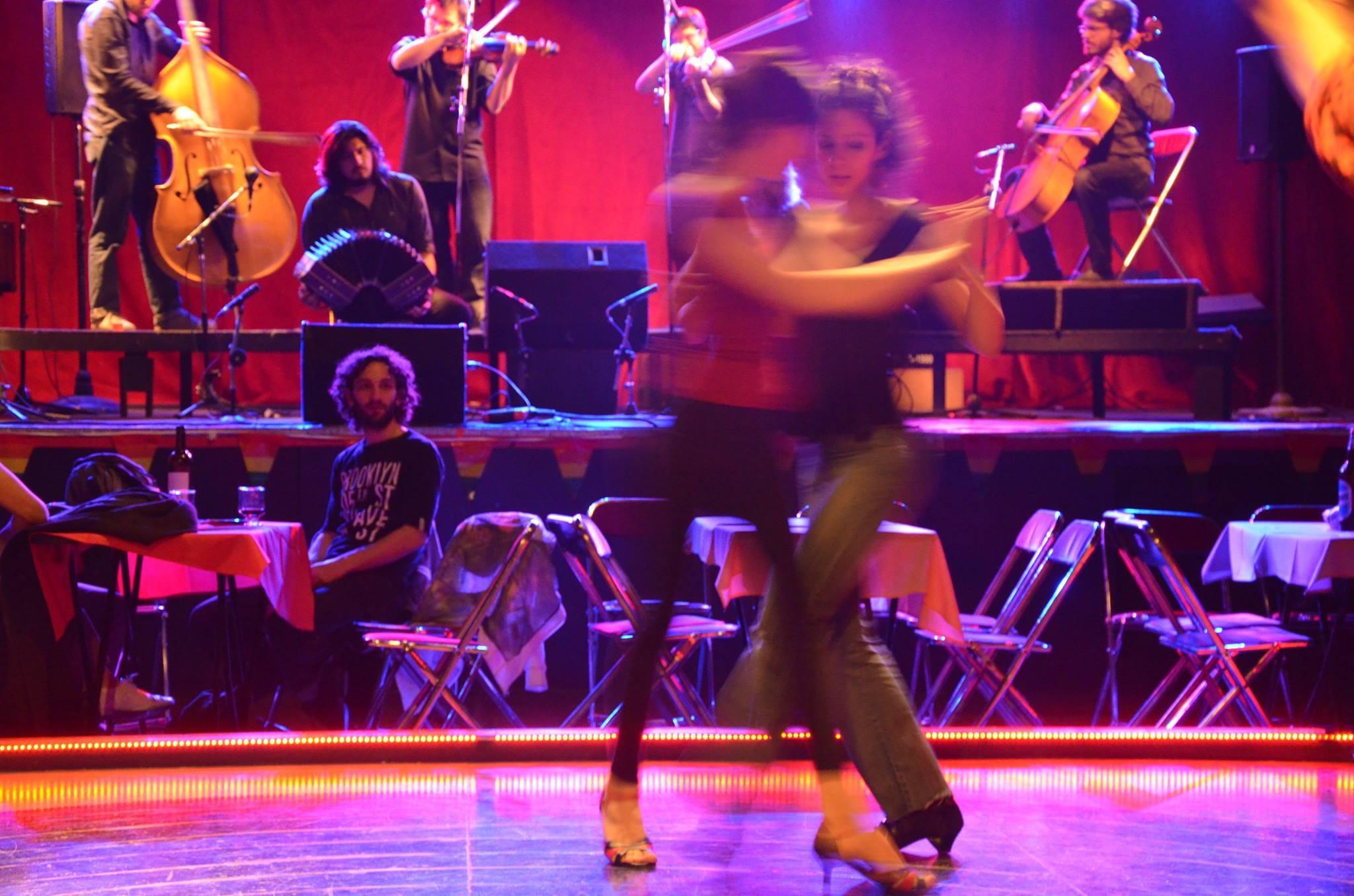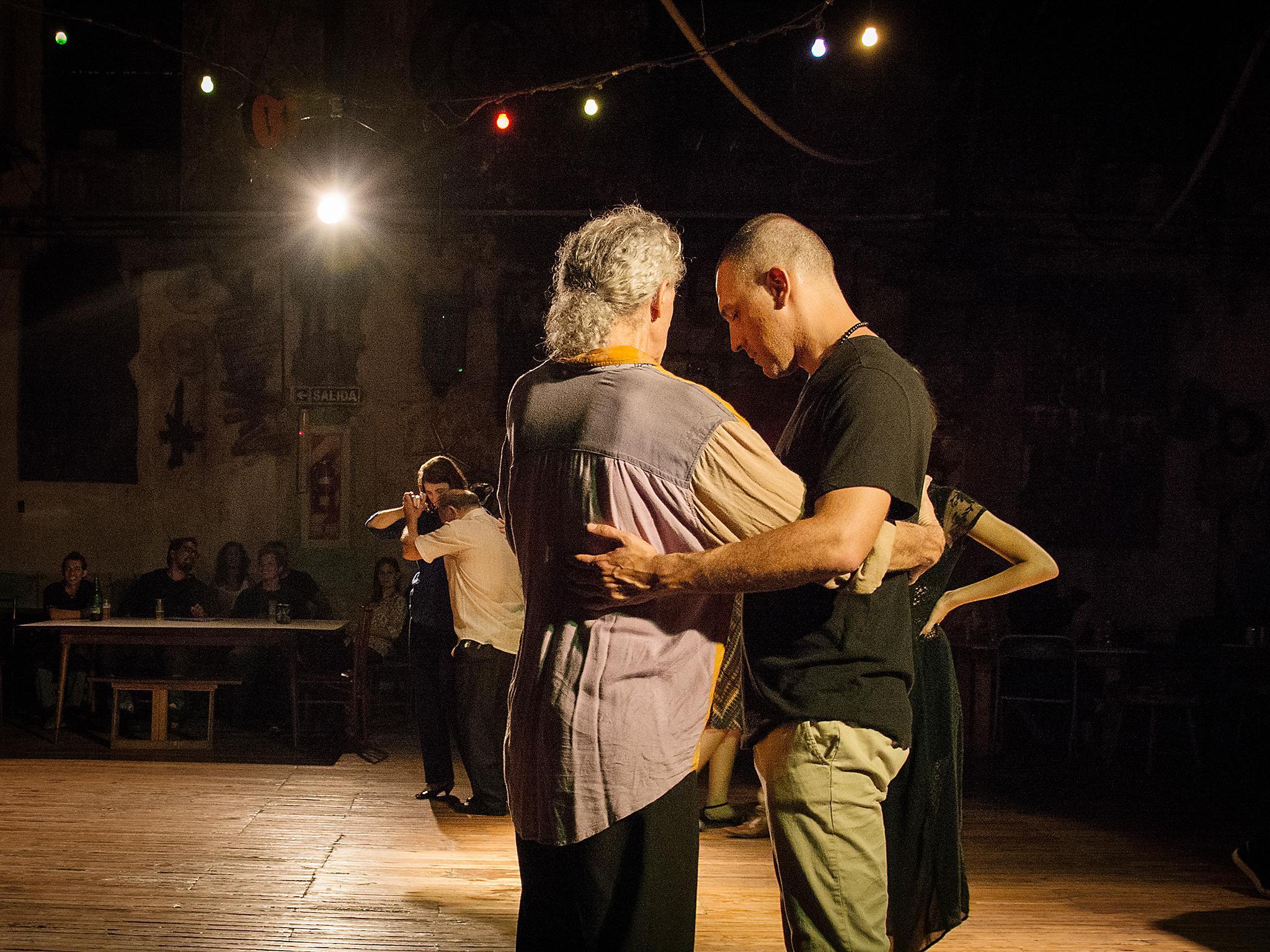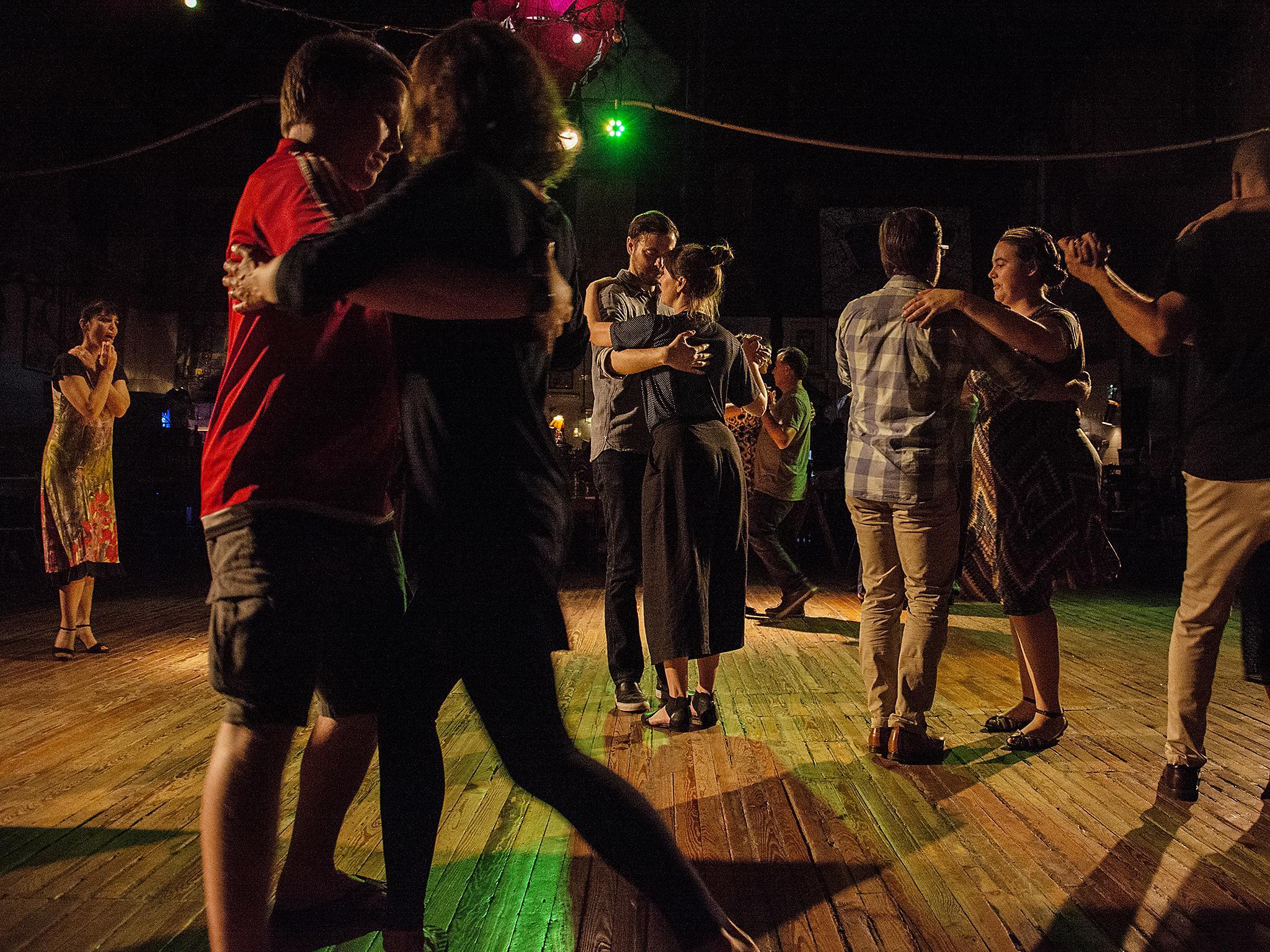The Independent's journalism is supported by our readers. When you purchase through links on our site, we may earn commission.
How ‘queer tango’ is steaming up dance floors in Buenos Aires
Buenos Aires is known for its milongas, where heterosexual couples steam up the room with their tango routines. But now, there’s a new way to dance. Meaghan Beatley reports from Argentina’s ‘queer tango’ HQ

Your support helps us to tell the story
From reproductive rights to climate change to Big Tech, The Independent is on the ground when the story is developing. Whether it's investigating the financials of Elon Musk's pro-Trump PAC or producing our latest documentary, 'The A Word', which shines a light on the American women fighting for reproductive rights, we know how important it is to parse out the facts from the messaging.
At such a critical moment in US history, we need reporters on the ground. Your donation allows us to keep sending journalists to speak to both sides of the story.
The Independent is trusted by Americans across the entire political spectrum. And unlike many other quality news outlets, we choose not to lock Americans out of our reporting and analysis with paywalls. We believe quality journalism should be available to everyone, paid for by those who can afford it.
Your support makes all the difference.Beneath the red glow of a dim light, a woman in her sixties with a perm totters onto the dance floor and beckons to a young man. He looks down at his beer before glancing up at the sexagenarian and the whirl of couples revolving counter-clockwise behind her. “Bueno, querés bailar?” she asks impatiently – so, do you want to dance? He stands; she snatches him in a steely embrace, extends a trainer forward as he slides a polished leather shoe back, and off she leads.
Welcome to Tango Queer: home to the nonconformist and refuge to the neophyte. Here, the traditional Argentinian dance – celebrated worldwide for its sensual depiction of the (heterosexual) battle of the sexes – is flipped on its head to accommodate all proclivities and desires.
The milonga, or dance hall, is on the first floor of a historic building in Buenos Aires’ bohemian San Telmo district, reached by a winding marble staircase. It’s advertised as a space “open to everyone” where patrons can “freely choose who to dance with and which role [leader or follower] to take on.”
Tango Queer organiser Mariana Docampo founded the milonga 11 years ago because she wanted to create a space where she and her friends could freely dance with other women. She’s seen her fair share of raised eyebrows, but “queer tango is becoming more and more accepted”, she says. “It’s helping to open up society.”
But if you’re thinking L Word, think again. While you’ll certainly see intimidatingly attractive pairs of women sweeping the floor, skirts billowing above perfectly executed boleos, or hipster Clark Gable types dancing stubbly cheek to cheek, you’ll also find an army of beginners hobbling to what looks more like the polka.
The point, Tango Queer regular and dance instructor Liliana Chenlo tells me, is to “free ourselves of structure”.
“I wear a dress and I lead,” she tells me over coffee. “Well, I’ll wear trousers, but only if they’re pretty.”
Traditional tango is all about convention: men must ask women to dance via a head-nodding ritual called the cabeceo; pairs must finish a set of three songs before opting to switch partners; and, most importantly, men must dance with women, and men must lead while women follow.
“Queer tango doesn’t have gender,” explains Chenlo. “It doesn’t matter who you’re holding in your arms. Man, woman… it’s tango. You’re dancing.”

Queer tango as a movement emerged in the 1990s but remained largely underground and unreported until recent years. Although Argentina is ahead of the curve in terms of LGBTQ policy – gay marriage was sanctioned in 2010 and a Gender Identity Law making sex-change surgery a legal right was passed in 2012 – society remains overwhelmingly machista. In other words, chauvinist.
“Two women dancing together will get strange looks,” says Chenlo, of standard tango practices. “There’s even a milonga in the city with a sign at the entrance prohibiting people of the same sex from dancing together.”
Chenlo, who, in 2015, competed in Buenos Aires’ annual World Tango Championship as one of four same-sex duos, prefers to lead. She learned to do so out of necessity. “There were more girls than boys in my class, and I couldn’t find a boy to dance with me. So my teacher taught me the man’s part,” she says.
But, she reckons, dancing with women offers her more creative licence, so she’s stuck with it.
“Women are smaller – they’re more delicate, it’s easier to move them,” she says. “When you dance with a man, you feel much more contained. That’s generally because he’s bigger than you, his hold is firmer.” On top of that, he’s probably leading.
Patricio, a Chilean student attending university in Buenos Aires, tells me Tango Queer is “a good place to learn. People are generous.” That must ring especially true for a male novice: while female beginners are likely to be approached in traditional milongas by men looking to share their expertise or score a telephone number, inexperienced men aren’t so lucky – especially considering they’re expected to make the first move.

In fact, queer tango is arguably a return to the dance’s origins. Tango was born in Buenos Aires in the 1870s with the arrival of European immigrants – primarily men looking to make money to send back to their families. Women were hard to come by in a disproportionately male society, and queues to the brothel snaked down halls and streets, writes historian Christine Denniston in her book The Meaning of Tango. To keep their customers entertained while they waited, the brothel owners hired musicians to play the most popular tunes of the day – tangos. And since the ladies were otherwise occupied, men would seize the opportunity to practise their moves with each other.
Back at the milonga, our permed sexagenarian has swapped her beau for a young woman. They sway to the low sound of a bandoneón, eyes closed, cheek to cheek, impervious to stares.
Travel essentials
Getting there
British Airways flies direct from Heathrow to Buenos Aires from £906. Flying Iberia via Madrid is usually a cheaper route.
Staying there
NH Hotels have nine properties in Buenos Aires. The NH City is a good choice – it’s just off the Plaza de Mayo and has a rooftop pool and terrace. Doubles from $92 (£74), B&B.
More information
Tango Queer is held every Tuesday at 8pm, at Peru 571. Entrance 120 pesos (£6.30). La Marshall milonga also has a queer tango night: every Friday at 10pm, at Riobamba 416.
Join our commenting forum
Join thought-provoking conversations, follow other Independent readers and see their replies
Comments